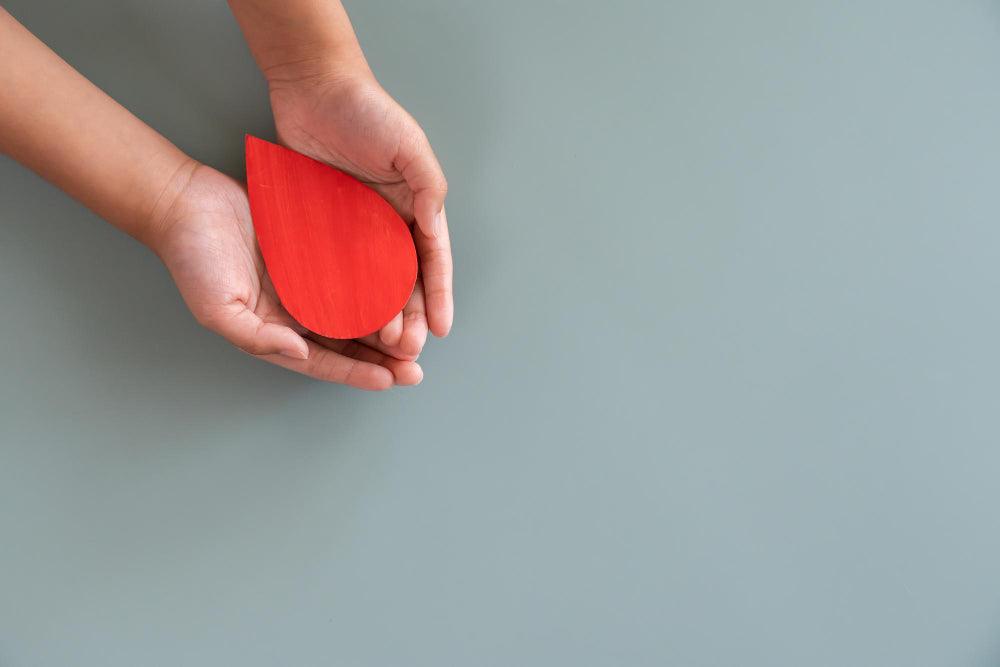Is Anaemia Dangerous?



Anaemia, also known as low haemoglobin, is a condition that occurs when there are not enough red blood cells to provide oxygen throughout your body's tissues, which causes weakness and fatigue. There are numerous anaemia types, each with its unique reason. Moreover, anaemia may range from moderate to severe, and it can be chronic or transitory that is usually caused by a combination of factors. Consult your physician if you feel you have anaemia. It might be an indication of severe sickness. So have it checked out right away before it gets dangerous. Dig deeper into anaemia with this post.

Anaemia or iron deficiency anaemia results from inadequate red blood cells that carry iron and haemoglobin, a protein that assists deliver oxygen via circulation to your organs throughout the body. A person is considered to be anaemic if they acquire anaemia. Being anaemic makes your skin appear pale, and you might feel colder or weary than usual. This is due to your organs that are not having sufficient oxygen to function correctly.

Anaemia causes various symptoms and signs, including cold, shortness of breath, and exhaustion. Others are as follows:
Rapid heartbeat
Restless legs syndrome
Skin that is easily bruised, dry, or pale
Tongue ache
Headache
Weakness or dizziness

The following are examples of possible life-threatening anaemias:
Aplastic anaemia occurs if your bone marrow is destroyed, causing your body to cease generating new blood cells. It might happen suddenly or gradually.
Paroxysmal nocturnal haemoglobinuria is an uncommon and potentially fatal condition. It generates bone marrow dysfunction, blood cell destruction, and blood clots. It is a hereditary disorder commonly detected in persons in their 30s or 40s.
Myelodysplastic syndromes are a collection of disorders that result in abnormalities in the blood-making cells in your bone marrow. Therefore, your bone marrow fails to produce sufficient cells, and the ones it makes are often faulty. These cells perish faster and are more vulnerable to immune system destruction.
Haemolytic anaemia occurs if your body's red blood cells have been destroyed quicker than they can be produced. It might be acute or persistent. Haemolytic anaemia may also be hereditary, meaning it is handed down via your genes, or it could be obtained.
Sickle cell anaemia is a genetic form of anaemia. It deforms your red blood cells, causing them to become sticky, complex, and sickle-shaped. This leads them to become lodged in tiny blood arteries, obstructing blood flow over your body and depleting tissues of oxygen.
Thalassemia is a genetic disorder that causes your body to produce insufficient haemoglobin. This is a protein that is essential for red blood cells. Without sufficient haemoglobin, your red blood cells do not function correctly and perish faster than healthy ones.
The major sign of severe malaria is anaemia. Numerous variables play a role in its development, such as the malaria parasite, bone marrow abnormalities, and dietary inadequacies that enters red blood cells.
Fanconi anaemia (FA) is a hereditary disorder that affects the bone marrow and leads you to have fewer blood cells than usual. Physical deformities, including hearing and visual issues, infertility, gastrointestinal malformations, chronic kidney disease, bone deformities, and deformed forearms or thumbs, are frequently caused by it.
It requires more than food and lifestyle adjustments to address severe anaemia; however, consuming a balanced diet high in iron will assist in maintaining your health. Treating anaemia often necessitates addressing the root cause. Here are several examples:
Immunosuppressants are used to treat several kinds of aplastic anaemia and haemolytic anaemia.
Eculizumab (Soliris) is a medication employed to address paroxysmal nocturnal haemoglobinuria. It prevents your system from damaging red blood cells.
Myelodysplastic syndrome chemotherapy
Taking iron supplements such as vitamin b12 and ferrous to aid in iron deficiency anaemia and loss of red blood cells.
Furthermore, blood transfusions may aid restore damaged or lost red blood cells and alleviate symptoms in all kinds of anaemia. However, it seldom addresses the fundamental reason.
When you cannot produce healthy red blood cells, a bone marrow transplant, also referred to as a stem cell transplant, is possible. During this treatment, your bone marrow is substituted with donated marrow, which may produce healthy cells.
To find out if you are iron deficient, order our Iron Deficiency Blood Test by clicking here.
Or if you would like to browse our range of private at-home blood tests, click here.










Plus get the inside scoop on our latest content and updates in our monthly newsletter.